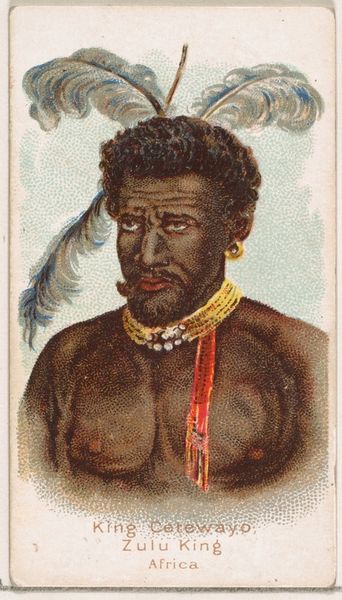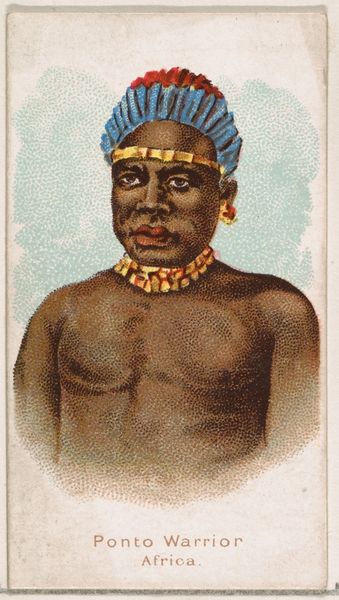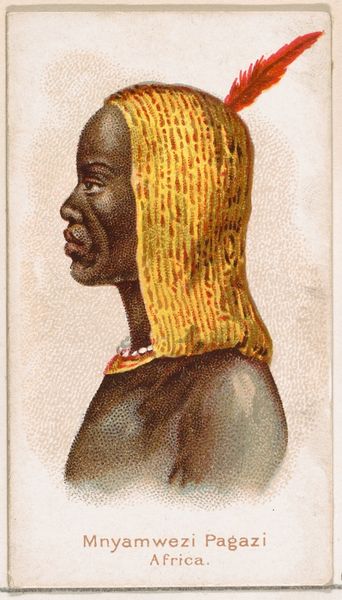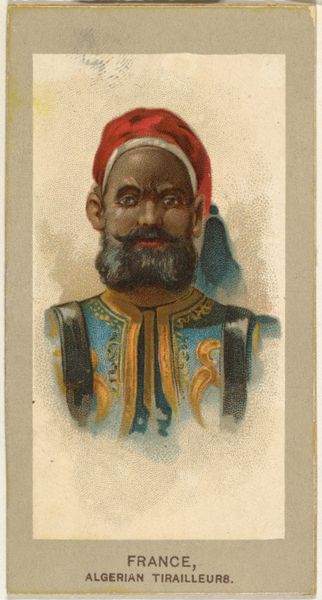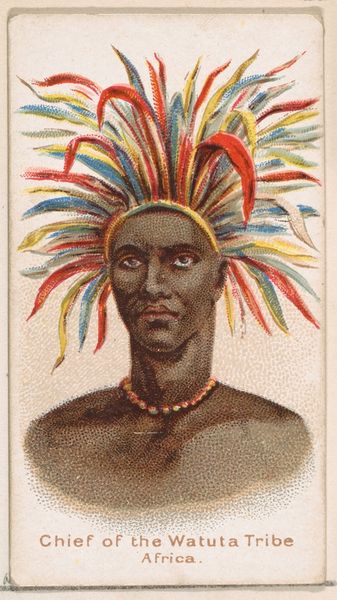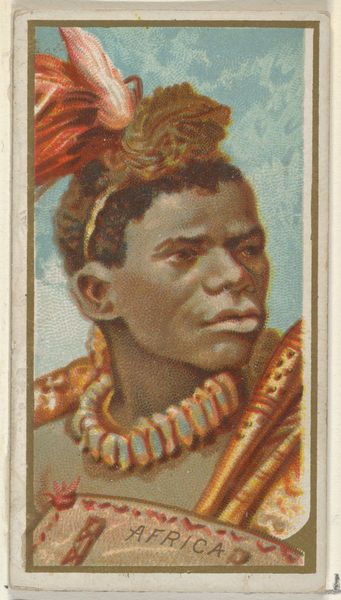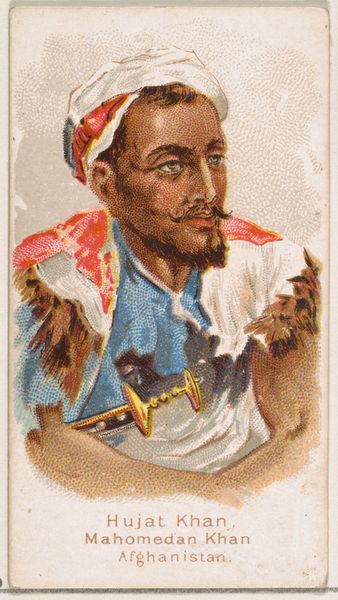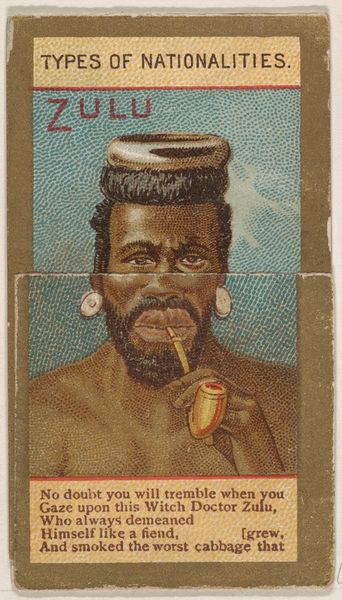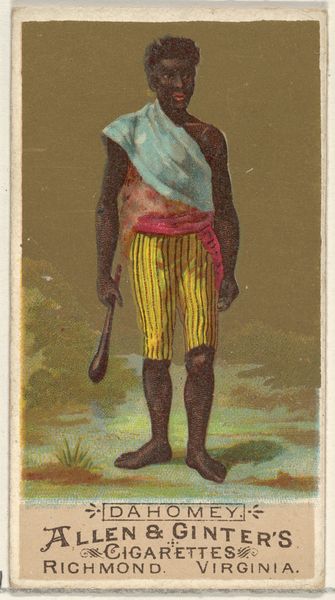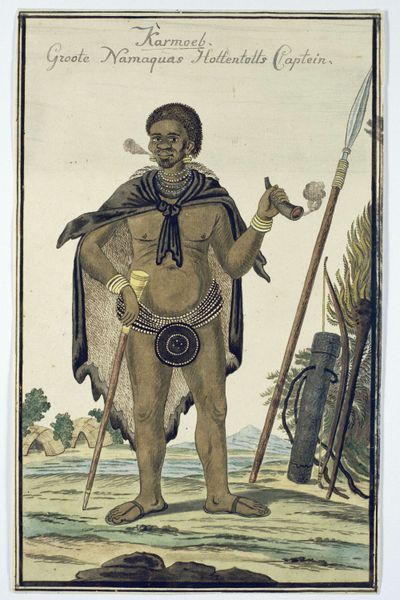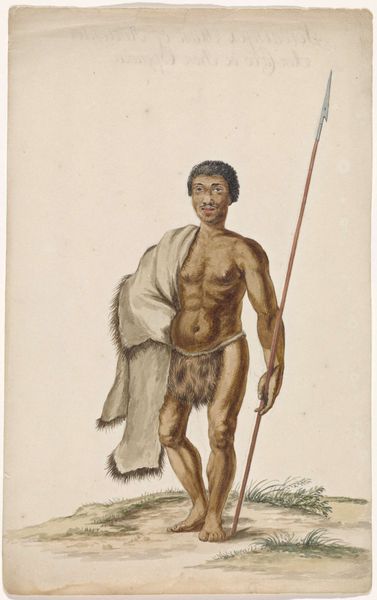
Dabularzi, King Cetewayo's Brother, Africa, from the Savage and Semi-Barbarous Chiefs and Rulers series (N189) issued by Wm. S. Kimball & Co. 1888
0:00
0:00
drawing, print, photography
#
portrait
#
african-art
#
drawing
# print
#
photography
#
portrait drawing
Dimensions: Sheet: 2 11/16 × 1 1/2 in. (6.8 × 3.8 cm)
Copyright: Public Domain
Curator: Here we have "Dabularzi, King Cetewayo's Brother, Africa," a print from 1888 by William S. Kimball & Co. Editor: Right away, I’m struck by the stillness in his eyes—almost a sadness. It feels deeply intimate, despite the obviously propagandistic nature of the series it's part of. Curator: Propaganda indeed. It comes from a series called "Savage and Semi-Barbarous Chiefs and Rulers." The blatant disrespect is a bitter aftertaste. Editor: The texture fascinates me. It's like looking at pointillism trying to imitate skin, but the printed dots never quite cohere into living flesh. Look at the neckpiece: that exquisite ruffled collar. It hints at the complexities and perhaps even the refinements the "savage" label tried to erase. Curator: It is more complex than that crude title suggests. Kimball & Co. mass-produced these as trade cards to include with cigarettes, making them incredibly accessible, widely distributed, and consumable. They’re an artifact of industrial ambition, really. Editor: And look at what that industrial ambition chose to portray—or rather, *how* it chose to portray him. The detail given to his adornments feels almost anthropological, cataloging the spoils. A stark contrast to the generalized “African” label. Curator: Yes, this is the visual language of empire at its most pervasive. To literally commodify an image of a person, strip them of agency, all to sell tobacco. You see echoes of this in how the subject is flattened into an easily digestible image. Editor: Do you think someone smoking these cigarettes ever truly pondered the individual depicted? Or was it just a flicker of exoticism, instantly extinguished? A moment of connection severed the instant they flicked the ash? Curator: That is the painful tension embedded in these objects, and it still reverberates now, doesn’t it? Dabularzi's gaze confronts us across a chasm of time and exploitation. It’s a mirror, of sorts. Editor: So this tiny card reminds us of the gigantic machinery behind even the simplest image. The layers of labor, the mining of materials, the imperial mindset… it is a lot to digest. Thanks for that heavy glimpse. Curator: My pleasure. Thank you for illuminating this piece through the context of its making; its creation for consumption.
Comments
No comments
Be the first to comment and join the conversation on the ultimate creative platform.
